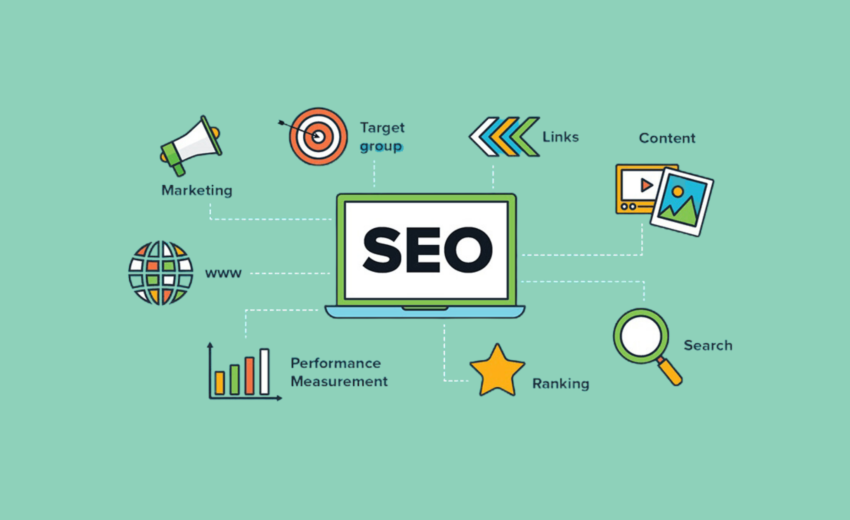
SEO means search engine optimization. To make a website’s pages more easily accessible, relevant, and popular for user search queries—and consequently rank higher in search engine results—it is necessary to optimize its technical setup, content relevancy, and link popularity. This process is known as SEO or search engine optimization.
Through the display of material that satisfies user search requirements, search engines promote SEO actions that improve both the user search experience and page ranking. Among other SEO-recommended practices, this entails using pertinent keywords in titles, meta descriptions, and headlines (H1), as well as descriptive URLs that include keywords rather than just a string of numbers and schema markup to define the meaning of the page’s content.
People can find what they’re seeking online with the aid of search engines. Search engines are almost always the first place people turn to when they need information, whether they are researching a product, finding a restaurant, or making travel plans. They present business owners with a great chance to drive targeted traffic to their websites.
The process of positioning your website to appear higher on a search engine results page (SERP) to increase traffic is known as search engine optimization or SEO. Usually, the goal is to appear on Google’s top page of results for search terms that matter most to your intended audience. Thus, SEO is as much about knowing your audience’s preferences and requirements as it is about the technical aspects of website configuration.
SEO activities can take place both on-site and off-site. That’s why you may often see SEO divided into “on-page” and ”off-page” categories.
In practice, SEO typically involves:
- Keyword research
- Content creation and optimization
- Technical Optimization
- Link building
First, the essentials
How does SEO work?
Any search term a user enters yields results from search engines. They examine and “understand” the massive network of websites that comprise the web to accomplish this. They choose which search query results to display by executing an intricate algorithm.
Why SEO emphasizes Google
Google holds over 92% of the global search engine market, and for many people, the word “search engine” is synonymous with Google. Since Google is the most popular search engine, SEO usually focuses on optimizing content for Google. It’s helpful to know exactly how and why Google operates.
What Google Wants
Google’s design is to provide users, or searchers, with the optimal search experience. This entails giving the most pertinent results as soon as possible.
The search phrase (user input) and the search results (output) are the two main components of the search experience.
Since the user will likely click on the top result and be satisfied with the result, Google views this as an excellent search result and a favorable user experience.
How much money does Google make?
Google makes money when users value and trust its search engine. It does it by providing insightful search results.
Additionally, Google offers companies the option to purchase an advertisement to appear at the top of search result pages. These listings are indicated by the term “Ad.” When searchers click on these pay-per-click (PPC) ads, which you buy through AdWords, Google gets paid. Specifically, these advertisements will appear for more general queries.
These search results are nearly identical to normal ones, save for the little label. Naturally, this is done on purpose because many users click on these results without understanding they are advertisements.
That’s what Google is depending on. Almost eighty percent of Google’s 2020 revenue of $182.5 billion came from advertising. As a result, even though search services are still its key offering, it depends on its advertising revenue.
Structure of search engine results
Paid and “organic” search results make up the SERPs; Google does not get any money from the organic results. Instead, Google presents natural results according to how well and relevant it deems a website to be. Google will also display different components on the SERP, such as maps, photos, or videos, based on the type of search query.
What users have searched for determines how many ads appear in a SERP. For instance, if you searched for “shoes,” you would probably find that a good portion of the top results were advertisements. You’ll likely need to scroll down the page to locate the first organic result.
Since many shoe firms are ready to pay for a place in the AdWords results for this query, there’s a good possibility that the searcher is trying to buy shoes online, which is why a query like this typically yields so many ads.
However, you will get different results if you search for something like “Atlanta Falcons.” The first several results are related to the professional American football team of the same name because that is the main connection to this search. Still, the question is not quite apparent. Their site, a knowledge graph, and news articles are all present. Although Google doesn’t seem to understand exactly what you were searching for, these three types of results at the top offer easy options to visit the team’s website, read their most recent news, or find out more about them.
There are no AdWords results because advertisers are hesitant to bid for the keyword because it doesn’t appear that the query has a purchase intention.
But if you alter your search term to “Atlanta Falcons hat,” you tell Google that you could be shopping, and as a result, more sponsored items appear in the SERPs.
Functions of SEO
Increasing your ranking in organic search results is the aim of SEO. AdWords, shopping, and local results optimization are all done in different ways.
Even though it would appear that the numerous competing items occupying space on SERPs are pushing the organic listings down, SEO can still be a very effective and lucrative endeavor.
Because Google handles billions of search queries every day, organic search results represent a sizable portion of the overall pie. Even if securing and maintaining organic rankings requires some initial and continuous expenditure, each click that drives traffic to your website is free.
Comments (1)
Comments are closed.












Faizan
August 21, 2023I appreciate your article because it’s informative and helpful.